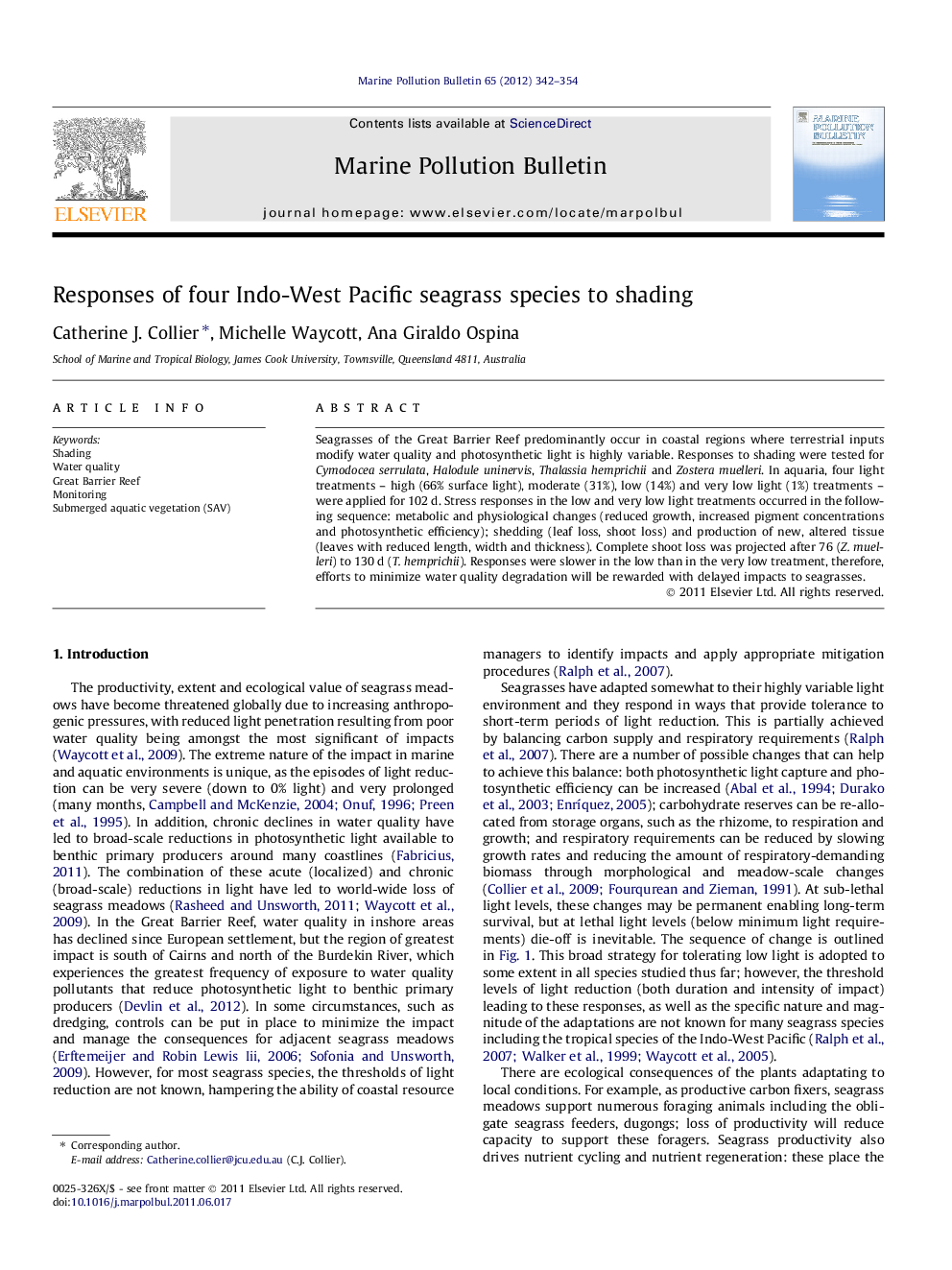| Article ID | Journal | Published Year | Pages | File Type |
|---|---|---|---|---|
| 6360308 | Marine Pollution Bulletin | 2012 | 13 Pages |
Seagrasses of the Great Barrier Reef predominantly occur in coastal regions where terrestrial inputs modify water quality and photosynthetic light is highly variable. Responses to shading were tested for Cymodocea serrulata, Halodule uninervis, Thalassia hemprichii and Zostera muelleri. In aquaria, four light treatments - high (66% surface light), moderate (31%), low (14%) and very low light (1%) treatments - were applied for 102Â d. Stress responses in the low and very low light treatments occurred in the following sequence: metabolic and physiological changes (reduced growth, increased pigment concentrations and photosynthetic efficiency); shedding (leaf loss, shoot loss) and production of new, altered tissue (leaves with reduced length, width and thickness). Complete shoot loss was projected after 76 (Z. muelleri) to 130Â d (T. hemprichii). Responses were slower in the low than in the very low treatment, therefore, efforts to minimize water quality degradation will be rewarded with delayed impacts to seagrasses.
⺠All species responded to shading with metabolic changes, shedding and production of altered leaves. ⺠Complete seagrass loss was projected after 76-133 d at 1% of surface light. ⺠Zostera muelleri was impacted the fastest and with the greatest magnitude. ⺠The intensity of light reduction was critical for the degree and rate of impact.
